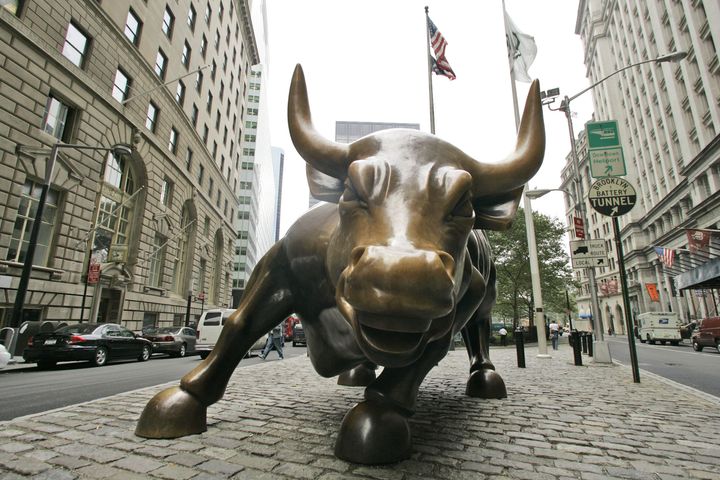
A couple of weeks to go and it'll be that time of the year again. Time, that is, for that old Wall Street saying--Sell in May and go away!
But what does it all mean? Does this saying really have any legitimacy? And should you heed these worrisome words?
For some thoughts, I rang up Sam Stovall, Standard & Poor's chief investment strategist, and one of the Street's leading historians. Actually, there's a third part to that May saying--and stay away until St. Ledger's Day, which is a reference to an annual horse race held in the U.K. during mid-September.
The significance here, at least for the stock market, is that May is by no means the merry month of May, as the song or nursery rhyme would have you believe. The fact is it's the year's tenth worst month, averaging, as measured by the S&P 500, a yearly decline, dating back to 1928, of 0.04%. Further, Stovall tells me, the six-month period, May through October, has underperformed the other six months, November though April, 71% of time since 1945. The chief reason: money managers and traders tend to hang out at the beach during the traditionally slow summer months.
My first reminder this year of the May saying came in a recent e-mail from of all places, Amman, Jordan. It was from a HuffPost reader, Caise Hassan, a 36-year-old trader in the U.S. markets and currencies, who took issue with a recent piece I did in which I quoted some money managers who predicted still higher stock prices. He thinks the bulls are on another planet.
Hassan, who trades his own money, was born in Chicago (where his Palestinian-born father operated some small clothing stores) and moved to Amman in September of 2009, made a handsome score in 2008. In August of that year he heavily shorted the market (a bet stock prices would fall) with the S&P 500 in the 1260-1270 range. By October of that year, the index fell to about 800. In the process, Hassan tells me, he parlayed about $60,000 into $200,000.
Though Wall Street is predominantly bullish, Hassan thinks the market rise is on borrowed time. "We're within a month of the top, with the Nasdaq probably the first to fall," he believes. Google and Amazon, he notes, look especially vulnerable. Hassan, who is closing out his long positions, looks for the market to kick off a 20%-25% correction starting next month. By the end of this month, he says, he will start shorting companies with weak earnings. For investors with a 6-12 month horizon, he observes, "I wouldn't look at stocks until September."
Hassan offers a number of reasons to support his bearish stance. Chief among them:
--Excessive bullish sentiment.
--Falling dividend yields (now about 2.5% on the Dow). Often when this yield falls below 3%, a major correction has followed).
--Bond prices have fallen since mid-March, resulting in higher interest rates, a fundamental killer of stock market rallies. Likewise, says Hassan, interest rates can only go higher from current levels
--The VIX (a volatility index). a contrary indicator, is at its lowest level since May of 2008.
--The New York Stock Exchange's advance-decline line (a reference to the number of advancing stocks, versus those that are declining) is showing a divergence from the currently rising stock prices.
--Turn of the decade years often seem to be preceded by large 18 month move up, followed by a steep drop that can last two years. For example, the 1998-2000 bull market was followed by a two-year drop. The 1998-1990 bull market (following a crash in October 1987) led to a 12% decline from mid-1990 until the Gulf War.
Hassan also raises another development that could impact the market--the possibility of a major war in the Middle East. He notes that Israel is moving defensive missiles near its border with Syria and Lebanon. Further, the Israeli air force has flown over Lebanese air space several times in the past couple of months and the Lebanese government has interpreted this as a provocation for war. There is also palpable outrage across the Middle East, Hassan says, against Israeli policies in Jerusalem's holy sites and settlements.
Stovall, on the other hand, is a bull. For starters, he sees the economy on a roll, with GDP growing 3% this year and 2.9% next year. Further he pegs S&P 500 earnings growth at 37% in 2010 and 20% in 2011. He also points to such other market catalysts as the likelihood of continued low interest rates until after the November election, continued elevated economic and earnings growth projections, a reduced threat of a double-dip recession and expected easing in the value of the greenback into mid-2011.
It's not, though, as Stovall sees it, a case of up, up and away. He figures stocks could get hit by a 5%-10% decline, reflecting that May through October weakness, possibly triggered by corporate earnings guidance weaker than Wall Street expects, threat of a double-digit recession (which S&P doesn't expect), an additional bailout required by a debt-ridden European country and anything that could trip up China's growth, which is seen as an engine of optimism.
These concerns aside, Stovall sees the S&P 500 (now about 1211) climbing to 1245 by year end.
His five favorite stocks, which he believes have the potential to average a 25.6% gain over the next 12 months, all carry the highest five-star S&P rankings. They are State Street Corp., IBM, Adobe Systems, Medtronic and Jacobs Engineering.
What do you think? E-mail me at Dandordan@aol.com